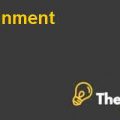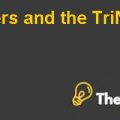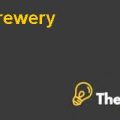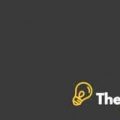
INTRODUCTION OF THE TOPIC
The Beneish M Score Model has been created by Professor Messod Beneish. This is basically a mathematical model and this model used eight financial ratios to find out a score, that whether a company is manipulating its earnings or not. These eight financial ratios are calculated from the company’s financial statements. The M Score model is more or less same like the Altman Z Score model but this is the tool to measure the degree of manipulation in earnings rather than detecting the risk of bankruptcy. The eight variables that are used to calculate the score for this model are:
- Days Sales in Receivables Index (DSRI): This ratio is used to calculate the revenue inflation on a year on year basis by calculating the day’s sales in receivables.
- Gross Margin Index (GMI): The second ratio focuses on the gross margin as a percentage of sales and compares on a year on year basis. The company which has a poor Gross Margin Index is more likely to manipulate its earnings to project good results for the company.
- Asset Quality Index (AQI): The third ratio is calculated by dividing the non-current assets excluding the property plant and equipment and it is divided by the total assets of the company. This is also done on a year on year basis to see asset quality with respect to the prior year.
- Sales Growth Index (SGI): The fourth ratio of sales growth index is calculated as simply taking out the ratio of sales by comparing the sales growth percentage with the prior years. This ratio also does not indicate the manipulation of earnings but the companies whose growth rate is high are more likely to manipulate the earnings to keep their performances up.
- Depreciation Index (DI): This ratio is simply calculated by dividing the depreciation expense by the gross property, plant and equipment value. If the rate of depreciation is slow, this means that the management of the company is revising the useful lives of the assets or it may be incorporating new methods to record depreciation which are income friendly methods.
- Sales, General & Administrative Expenses (SGAI): This ratio is simply measured by dividing the selling, general and admin expenses by the total sales and then comparing the ratio with the prior years. The assumption which is embedded within this ratio is that disproportionate increase in sales will signal negatively about the future performance of the company.
- Leverage Index (LI): This ratio is calculated by dividing the total debt with the total assets of the company. This ratio helps to identify the debt covenants which could be used for earnings manipulation.
- Total Accruals to Total Assets (TATA): This ratio is basically calculated by dividing the working capital excluding cash with the depreciation expense for the year. This ratio reveals the accounting choices of the managers which are discretionary in nature, to change the earnings of the company.
A specific formula is used to calculate the total M score for a particular company. All the eight ratios are weighted together according a specific formula. The formula is shown below:
- M = -4.84 + 0.92*DSRI + 0.528*GMI + 0.404*AQI + 0.892*SGI + 0.115*DEPI – 0.172*SGAI + 4.679*TATA – 0.327*LVGI
The standard level for the M score model is -2.22. If a firm has a score which is greater than this level which means less negative than this number, it shows that the firm is more likely to be a manipulator of earnings.
IMPORTANCE OF THIS TOPIC
Investors want to know about the true financial health of a company. The quality of the earnings is one of the most important measures to evaluate the performance of the company. Earnings quality means the stability in the earnings or how much lacking is there in the earnings. The Beneish Score model is one of the most famous forensic tools which helps the company to assist in the evaluation of the earnings of the company and the probability of the manipulation of the earnings.
The management, investors and the analysts today want to know about the true quality of earnings of the company. There are many ways to manipulate the earnings of an organization and boost the sales and net income. Some of the examples include: the recording of the revenue too soon before rendering the services.........................
This is just a sample partial case solution. Please place the order on the website to order your own originally done case solution.













